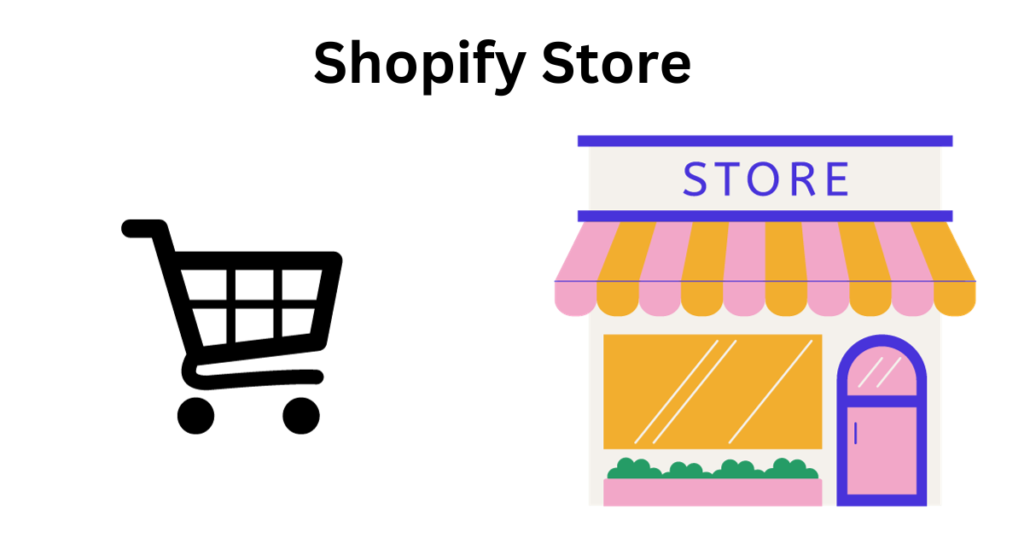Today Blog is About All paid course Free download How to free download paid course.
What is Shopify ?
Shopify is a popular e-commerce platform that allows individuals and businesses to create and manage their own online stores. It provides a user-friendly interface and a variety of tools to help users set up and customize their online shops without requiring extensive technical knowledge.
Key features of Shopify include:
- Storefront Creation: Users can design and customize their online storefronts using a range of templates and themes.
- Product Management: Shopify enables easy uploading and management of product listings, including details such as images, descriptions, prices, and inventory levels.
- Payment Processing: The platform supports various payment gateways, allowing merchants to accept payments from customers using credit cards, digital wallets, and other payment methods.
- Shopping Cart Functionality: Shopify provides a secure and efficient shopping cart system that allows customers to easily add products, review their orders, and complete the checkout process.
- Security: Shopify takes care of security aspects, including hosting, payment security, and compliance with industry standards, to ensure a secure online shopping experience for both merchants and customers.
- Mobile Responsiveness: Shopify stores are optimized for mobile devices, ensuring a seamless shopping experience on smartphones and tablets.
- App Store: Shopify has an extensive App Store where users can find various apps and plugins to extend the functionality of their online stores, covering areas like marketing, analytics, and customer support.
- Hosting and Security: Shopify is a fully hosted solution, meaning that it takes care of the hosting infrastructure, security updates, and technical aspects, allowing users to focus on running their businesses.
- Multi-Channel Selling: Shopify enables users to sell products not only through their online store but also on social media platforms, marketplaces, and in physical locations with integrated point-of-sale (POS) solutions. All paid course Free download kaise kare new website.
Whether you’re a small business owner or a large enterprise, Shopify provides a scalable and flexible platform to build and grow your online presence. All paid course Free download kaise kare.
How To create Shopify Store ?
Creating a Shopify store involves several steps, and the platform is designed to be user-friendly. Here’s a general guide to help you get started with creating your Shopify store: All paid course Free download how to download.
Step 1: Sign Up for a Shopify Account
- Go to the Shopify website.
- Click on the “Start free trial” button.
- Enter your email address, create a password, and choose a store name.

Step 2: Set Up Your Store
- After signing up, you’ll be prompted to answer a few questions about your business and goals.
- Once completed, Shopify will take you to your admin dashboard.
Step 3: Customize Your Store
- Navigate to the “Online Store” section on the left sidebar.
- Click on “Customize” to choose a theme for your store.
- Customize your theme by adjusting colors, fonts, and other design elements.
- Add your logo and customize the header and footer.
Step 4: Add Products
- Go to the “Products” section on the left sidebar.
- Click on “Add product” to start adding your products.
- Fill in product details such as title, description, price, and images.
- Set up variants if your product comes in different options (e.g., sizes, colors).
Step 5: Set Up Payments
- In the admin dashboard, go to “Settings” and then “Payments.”
- Choose a payment gateway. Shopify Payments is the default option, but you can also use third-party gateways like PayPal, Stripe, etc.
- Follow the instructions to set up your chosen payment method.
Step 6: Configure Shipping Settings
- In the “Settings” menu, select “Shipping.”
- Set up shipping zones and rates based on your location and where you plan to ship.
Step 7: Launch Your Store
- Review your store settings to ensure everything is set up correctly.
- Click on “Online Store” in the left sidebar, then “Preferences.”
- Uncheck the password-protect option if you want your store to be publicly accessible.
- Click “Save.”
- Your store is now live!
Step 8: Add a Domain (Optional)
- If you have a custom domain, go to “Online Store” > “Domains” to add it to your Shopify store.
- Follow the instructions to connect your existing domain or buy a new one through Shopify.All paid course Free download kaise kare.
Step 9: Explore Apps (Optional)
- Visit the Shopify App Store to explore and install apps that can enhance your store’s functionality (e.g., marketing, analytics, SEO).
Congratulations! You’ve now set up your Shopify store. Keep in mind that this is a simplified guide, and you may need to explore specific features based on your business needs. Shopify offers extensive documentation and customer support to assist you along the way. All paid course Free download kaise kare in hindi languages.
What is Social Media Marketing ?
Social media marketing (SMM) is a digital marketing strategy that utilizes social media platforms to promote products, services, or brands and engage with the target audience. The primary goal of social media marketing is to create and share content that encourages user participation, brand awareness, and customer interaction.

Key components of social media marketing include:
- Content Creation: Developing and sharing content on social media platforms, such as text posts, images, videos, and other multimedia, to capture the attention of the audience.
- Audience Engagement: Actively interacting with followers through comments, messages, and other forms of communication. Responding to questions, comments, and feedback helps build a sense of community around the brand.
- Social Advertising: Running paid advertising campaigns on social media platforms to reach a wider audience and target specific demographics. This may include sponsored posts, display ads, and other ad formats.
- Influencer Marketing: Collaborating with influencers or individuals with a significant following on social media to promote products or services. Influencers can help increase brand visibility and credibility.
- Analytics and Monitoring: Using analytics tools to track the performance of social media campaigns, measure engagement, and gather insights into audience behavior. This data helps in refining strategies and optimizing future campaigns.
- Brand Awareness: Creating and maintaining a consistent brand presence across social media platforms to increase brand awareness and recognition.
- Community Building: Fostering a community of engaged followers who share common interests related to the brand. Social media platforms provide an opportunity to build a loyal customer base.
Popular social media platforms for marketing include:
- Facebook: With a vast user base, Facebook is suitable for various types of businesses. It offers diverse ad formats and targeting options.
- Instagram: Known for its visual content, Instagram is effective for businesses with visually appealing products. It is owned by Facebook and offers similar advertising options.
- Twitter: Ideal for real-time updates, conversations, and engagement. Hashtags play a significant role in Twitter marketing .All paid course Free download kare free main.
- LinkedIn: Primarily a platform for professionals and B2B marketing. It’s useful for networking, industry updates, and business-related content.
- Pinterest: Suitable for businesses with visually-oriented products or services. Users often use Pinterest for inspiration and planning.
- YouTube: A video-centric platform, excellent for businesses that can create engaging video content. YouTube is the second-largest search engine globally. All paid course Free download kaise kare eassy steps.
Effective social media marketing requires a strategic approach, understanding the target audience, and consistent efforts to maintain an active and engaging online presence. It can contribute to brand building, customer acquisition, and driving traffic to a company’s website.
♻️Share And Support us♻️
Course Teacher : – All paid course Free download
Course Language : English & Mix
Course Size : 600GB +
Course Real Price : Around 100000+
Course : All paid course Free download pack-4
All paid course Free download Click For Download :

All paid course Free download Join To Our Telegram Group :

